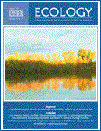Ver ítem
- xmlui.general.dspace_homeCentros Regionales y EEAsCentro Regional Santa FeEEA RafaelaArtículos científicosxmlui.ArtifactBrowser.ItemViewer.trail
- Inicio
- Centros Regionales y EEAs
- Centro Regional Santa Fe
- EEA Rafaela
- Artículos científicos
- Ver ítem
13C‐labeling shows the effect of hierarchy on the carbon gain of individuals and functional groups in dense field stands
Resumen
Measurements of resource capture by individuals, species, or functional groups coexisting in field stands improve our ability to investigate the ecophysiological basis of plant competition. But methodological and technical difficulties have limited the use of such measurements. Carbon capture, in particular, is difficult to asses in heterogeneous, dense field stands. Here we present a new approach to measure in situ daily gross carbon gain of individuals.
[ver mas...]
Measurements of resource capture by individuals, species, or functional groups coexisting in field stands improve our ability to investigate the ecophysiological basis of plant competition. But methodological and technical difficulties have limited the use of such measurements. Carbon capture, in particular, is difficult to asses in heterogeneous, dense field stands. Here we present a new approach to measure in situ daily gross carbon gain of individuals. It is based on measuring the 13C content of shoots after a few hours of continuous labeling of all assimilated CO2. The technique is simple and has few assumptions. A new, fully mobile facility was developed, capable of providing a labeling environment with a CO2 concentration close to atmospheric air and known, constant 13C‐enrichment, while maintaining temperature and relative humidity within ambient values. This facility was used in seminatural grasslands of Germany and Argentina to explore the relationship between size and carbon gain of individuals of coexisting species growing in contrasting hierarchical positions, and to analyze the carbon gain of functional groups. In general, carbon gain per unit shoot mass increased with increasing size among small individuals, but it became independent of size among the largest ones. In consequence, competition appeared to be size asymmetric between subordinate individuals but size symmetric between dominant individuals. When comparing functional groups, the carbon gain per unit shoot mass of rosette dicots vs. grasses reflected not their relative contribution to stand biomass, but their hierarchical position: irrespectively of mass or growth form, being taller than neighbors was most important in determining carbon gain per unit shoot mass. We believe these results show that in situ measurements of carbon gain can provide valuable insight in field studies of plant competition.
[Cerrar]

Autor
Lattanzi, Fernando Alfredo;
Berone, German Dario;
Feneis, Wolfgang;
Schnyder, Hans;
Fuente
Ecology 93 (1) : 169-179 (January 2012)
Fecha
2012-01
Editorial
Ecological Society of America
ISSN
0012-9658
1939-9170
1939-9170
Formato
pdf
Tipo de documento
artículo
Palabras Claves
Derechos de acceso
Restringido
 Excepto donde se diga explicitamente, este item se publica bajo la siguiente descripción: Creative Commons Attribution-NonCommercial-ShareAlike 2.5 Unported (CC BY-NC-SA 2.5)
Excepto donde se diga explicitamente, este item se publica bajo la siguiente descripción: Creative Commons Attribution-NonCommercial-ShareAlike 2.5 Unported (CC BY-NC-SA 2.5)

